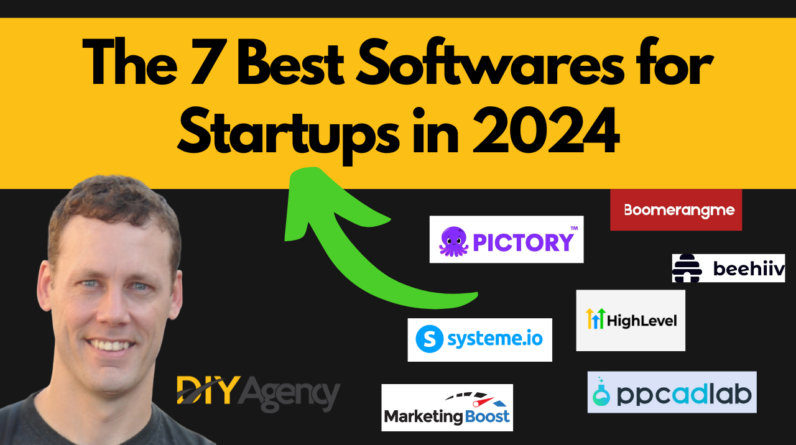
In this article, we will explore the most effective ways for you to maximize social media for your affiliate marketing efforts. You will learn strategies and techniques that can help you generate more traffic, increase your audience engagement, and ultimately, boost your affiliate sales. From leveraging different social media platforms to creating compelling content, we will cover everything you need to know to make the most out of your social media presence as an affiliate marketer. So, let’s get started and uncover the secrets to maximizing social media for your affiliate marketing success!
Maximizing Social Media for Affiliate Marketing
In today’s digital landscape, social media has become an integral part of our daily lives. With billions of users actively engaging on various platforms, it has become an incredibly powerful tool for businesses to reach their target audience. One area where social media can be particularly impactful is affiliate marketing. By leveraging the power of social media, you can expand your reach, build trust and credibility, and engage with your audience in meaningful ways. In this article, we will explore the most effective ways to use social media for affiliate marketing and how you can maximize its potential.
Understanding Affiliate Marketing
Before diving into the specifics of leveraging social media for affiliate marketing, it’s important to have a clear understanding of what affiliate marketing entails. Simply put, affiliate marketing is a performance-based marketing model where individuals, known as affiliates, promote products or services on behalf of a merchant or business. Affiliates earn a commission for every sale or lead they generate through their promotional efforts. It’s an effective and cost-efficient way for businesses to increase their sales while rewarding affiliates for their marketing efforts.
How Affiliate Marketing Works
In the context of social media, affiliate marketing works by affiliates promoting products or services through their social media channels. They earn a commission when a sale is made through their affiliate link or when a lead is generated. Affiliates can share their unique affiliate links on their social media profiles, posts, and even in direct messages. Whenever someone clicks on an affiliate link and completes a desired action, such as making a purchase or signing up for a newsletter, the affiliate is credited for the referral and receives a commission.
Benefits of Affiliate Marketing
Affiliate marketing offers several benefits for both affiliates and merchants. For affiliates, it provides an opportunity to earn passive income by promoting products or services they believe in. They can choose to work with multiple merchants and have the flexibility to promote products that align with their interests and values. On the other hand, merchants benefit from affiliate marketing by tapping into the network and influence of affiliates. It allows them to reach a wider audience and increase their sales without spending a significant amount on traditional advertising.
Importance of Social Media in Affiliate Marketing
When it comes to affiliate marketing, social media plays a crucial role in maximizing its effectiveness. Here’s why:
Expanding Reach and Visibility
Social media platforms have a massive user base, offering an unparalleled opportunity to expand your reach and increase visibility. By effectively leveraging social media, affiliates can reach a much larger audience beyond their immediate circle of followers. The viral nature of social media can lead to exponential growth in exposure, giving affiliates the potential to reach thousands or even millions of people with their promotional content.
Building Trust and Credibility
Trust and credibility are vital factors in converting potential customers into actual buyers. Through social media, affiliates have the ability to connect with their audience on a personal level, building trust and establishing themselves as authorities in their respective niches. By consistently sharing valuable and relevant content, affiliates can position themselves as trustworthy sources of information, making it more likely for their audience to trust their recommendations and make purchases through their affiliate links.
Growing Audience Engagement
One of the key advantages of social media is its interactive nature. It allows affiliates to engage with their audience in real-time and foster meaningful connections. By actively participating in conversations, responding to comments, and addressing queries, affiliates can create a sense of community and encourage audience engagement. This not only strengthens the bond between affiliates and their followers but also increases the likelihood of conversions. When affiliates engage with their audience authentically, it cultivates a loyal and dedicated following.
Choosing the Right Social Media Platforms
With numerous social media platforms available, it’s important to choose the ones that best align with your target audience and goals. Here are some factors to consider when selecting the right platforms for your affiliate marketing efforts:
Analyzing Target Audience Demographics
Understanding your target audience’s demographics is crucial in determining which social media platforms are most suitable for reaching them. Consider factors such as age, gender, location, and interests when analyzing your target audience. For example, if your target audience consists of young adults interested in fashion and beauty, platforms like Instagram and TikTok may be more effective in reaching them compared to platforms like LinkedIn or Twitter.
Researching Platform Popularity and User Behavior
Researching platform popularity and user behavior can provide valuable insights into which platforms are most popular among your target audience. Take into account the number of active users on each platform, the engagement levels, and the types of content that perform well. For example, if your target audience is highly engaged on Facebook and enjoys visual content, it may be beneficial to focus your efforts on creating compelling Facebook posts with eye-catching visuals.
Considering Platform-Specific Features and Capabilities
Each social media platform has its own unique features and capabilities that can enhance your affiliate marketing efforts. Consider the platform-specific features that align with your goals and content strategy. For instance, Instagram’s Stories feature allows for interactive content, while YouTube offers video content opportunities. By leveraging these platform-specific features, you can create more engaging and tailored content that resonates with your audience.
Creating Compelling Social Media Profiles
Your social media profiles serve as the first impression for potential followers and customers. It’s essential to optimize your profiles to make them compelling and informative. Here are some tips for creating compelling social media profiles:
Optimizing Profile and Cover Images
Choose profile and cover images that reflect your brand and capture the attention of users. Use high-quality images that are visually appealing and relevant to your niche. Make sure your profile picture is clear and recognizable, such as a professional headshot or a logo. Your cover image should showcase your brand personality and convey your message effectively.
Crafting an Engaging Bio
Your bio is a valuable opportunity to capture the attention of potential followers and communicate who you are and what you do. Craft a compelling bio that clearly states your niche, your unique selling proposition, and the benefits of following you. Use keywords and relevant hashtags to increase the discoverability of your profile.
Including Relevant Contact Information
Make it easy for your audience to get in touch with you by including relevant contact information in your profile. Provide your email address, website, or any other preferred method of contact. This will not only give your audience a way to reach out to you but also establish trust and credibility.
Developing an Effective Content Strategy
Creating valuable and engaging content is essential for driving engagement and conversions through social media. Here are some key steps to developing an effective content strategy:
Identifying Valuable Content Types for the Audience
Understand the content types that resonate with your audience and provide value to them. This could include informative blog posts, how-to guides, product reviews, or entertaining videos. Tailor your content to address the pain points and interests of your audience, and focus on providing solutions or valuable insights that they can benefit from.
Planning a Content Calendar
Consistency is key when it comes to social media. Plan a content calendar to map out your content strategy and ensure a consistent posting schedule. This will help you stay organized and ensure that you consistently deliver fresh and engaging content to your audience. Consider using scheduling tools to streamline your posting process and maintain consistency.
Strategically Utilizing Visual Elements
Visual elements such as images and videos are highly engaging and can significantly enhance your social media content. Incorporate high-quality visuals that are relevant to your content and visually appealing. Use visually appealing images, infographics, or even tutorial videos to captivate your audience and convey your message effectively.
Leveraging Influencer Marketing
Influencer marketing has become a powerful strategy in affiliate marketing. By partnering with influencers in your niche, you can tap into their audience and leverage their influence to promote your affiliate products. Here’s how you can effectively leverage influencer marketing:
Identifying Relevant Influencers in the Niche
Research and identify influencers in your niche who have an engaged and relevant audience. Consider factors such as the size of their audience, engagement rates, and their alignment with your brand values. Look for influencers who are experts in their field and have a genuine interest in the products or services you are promoting.
Establishing Partnerships and Collaborations
Once you’ve identified relevant influencers, reach out to them and establish partnerships or collaborations. Clearly communicate your goals and expectations, and discuss how you can mutually benefit from the collaboration. This could include sponsored posts, product reviews, or exclusive discount codes for their audience.
Measuring Influencer Impact and ROI
Set up tracking systems to measure the impact and return on investment (ROI) of your influencer collaborations. Monitor metrics such as clicks, conversions, and engagement generated through their content. This will help you assess the effectiveness of your influencer partnerships and make data-driven decisions for future collaborations.
Implementing Affiliate Links and Tracking
Effective integration of affiliate links within your content is crucial for driving conversions. Here are some tips for implementing affiliate links and tracking their performance:
Choosing the Right Affiliate Network or Tool
Select the affiliate network or tool that aligns with your niche and offers the products or services you want to promote. Research different affiliate networks and compare their commission rates, tracking capabilities, and reputation. Choose a network that is reliable, user-friendly, and provides accurate tracking.
Effectively Integrating Affiliate Links within Content
Integrate affiliate links seamlessly within your content to make them appear natural and non-intrusive. Place affiliate links strategically within relevant blog posts, videos, or social media captions. Clearly disclose your affiliate partnerships and be transparent with your audience to maintain trust.
Monitoring and Optimizing Link Performance
Regularly monitor the performance of your affiliate links to identify which promotions are driving the most conversions. Track key metrics such as clicks, conversions, and revenue generated. Use this data to optimize your promotional strategies, adjust your content strategy if needed, and focus on promoting products or services that resonate with your audience.
Engaging with the Social Media Community
Engaging with your social media community is key to building relationships and fostering trust. Here are some ways you can actively engage with your audience:
Responding to Comments and Messages
Take the time to respond to comments, direct messages, and mentions from your followers. Engage in meaningful conversations, address questions or concerns, and demonstrate your expertise and willingness to help. This will create a sense of community and encourage your audience to actively engage with your content.
Participating in Relevant Groups and Discussions
Join relevant social media groups or communities where your target audience hangs out. Actively participate in discussions, share your expertise, and provide valuable insights. By establishing yourself as a knowledgeable and helpful member, you can attract a loyal following and increase your authority in the niche.
Running Interactive Contests and Giveaways
Running interactive contests and giveaways is an effective way to generate buzz and engage with your social media audience. Encourage your followers to participate by liking, sharing, or commenting on your posts to enter the contest. This not only increases engagement and brand visibility but also gives you an opportunity to reward your audience and build brand loyalty.
Analyzing and Optimizing Social Media Performance
Tracking the performance of your social media efforts is essential for identifying successful campaigns, optimizing your strategies, and making data-driven improvements. Here are some key steps in analyzing and optimizing your social media performance:
Tracking Key Metrics and Analytics
Track important metrics such as reach, engagement, clicks, conversions, and revenue generated through your social media efforts. Use social media analytics tools to gain insights into the performance of your posts, campaigns, and overall social media presence. This will help you measure the effectiveness of your affiliate marketing efforts and identify areas for improvement.
Identifying Successful Campaigns and Content
Analyze the performance of your campaigns and content to identify what is resonating with your audience. Identify the posts or campaigns that have generated the most engagement, clicks, and conversions. Look for patterns or common elements in those successful campaigns to replicate their success in future efforts.
Implementing Data-Driven Improvements
Based on the insights gained from tracking metrics and analyzing successful campaigns, make data-driven improvements to your social media strategies. Experiment with different types of content, posting times, and engagement tactics to optimize your efforts. Continuously test and iterate your strategies to find what works best for your audience and goals.
Conclusion
Maximizing the potential of social media for affiliate marketing requires a strategic approach and consistent effort. By understanding how affiliate marketing works and leveraging the power of social media platforms, you can expand your reach, build trust and credibility, and engage with your audience in meaningful ways. From choosing the right social media platforms and creating compelling profiles to developing an effective content strategy, leveraging influencer marketing, and analyzing performance, each step plays a crucial role in harnessing the full potential of social media for affiliate marketing. Continuous adaptation, improvement, and dedication are key to reaping the benefits of social media in your affiliate marketing endeavors. So, start implementing these strategies and watch your affiliate marketing efforts thrive on social media!







